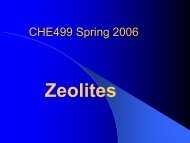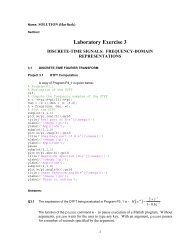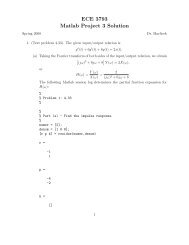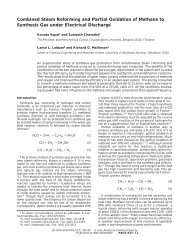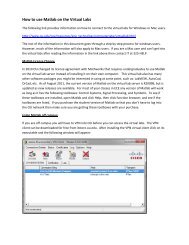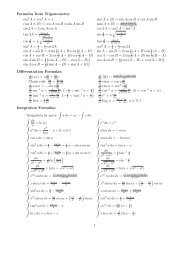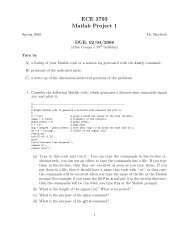Download self-assembled monolayers lecture
Download self-assembled monolayers lecture
Download self-assembled monolayers lecture
You also want an ePaper? Increase the reach of your titles
YUMPU automatically turns print PDFs into web optimized ePapers that Google loves.
Characterization:<br />
• Among the most frequently used techniques are infrared spectroscopy,<br />
ellipsometry, studies of wetting by different liquids, x-ray photoelectron<br />
spectroscopy, electrochemistry, and scanning probe measurements. It has<br />
been clearly shown that SAMs with an alkane chain length of 12 or more<br />
methylene units form well-ordered and dense <strong>monolayers</strong> on Au(111)<br />
surfaces. The thiols are believed to attach primarily to the threefold hollow<br />
sites of the gold surface, losing the proton in the process and forming a<br />
(sqrt(3)×sqrt(3))R30° overlayer structure (shown in Figure ). The distance<br />
between pinning sites in this geometry is 5.0 Å, resulting in an available<br />
area for each molecule of 21.4 Å2. Since the van der Waals diameter of<br />
the alkane chain is somewhat too small (4.6 Å) for the chain to completely<br />
occupy that area, the chains will tilt, forming an angle of approximately 30°<br />
with the surface normal. Depending on chain length and chain-terminating<br />
group, various superlattice structures are superimposed on the<br />
(sqrt(3)×sqrt(3))R30° overlayer structure. The most commonly seen<br />
superlattice is the c(4×2) reconstruction, where the four alkanethiolate<br />
molecules of a unit cell display slightly different orientations when<br />
compared with each other.



